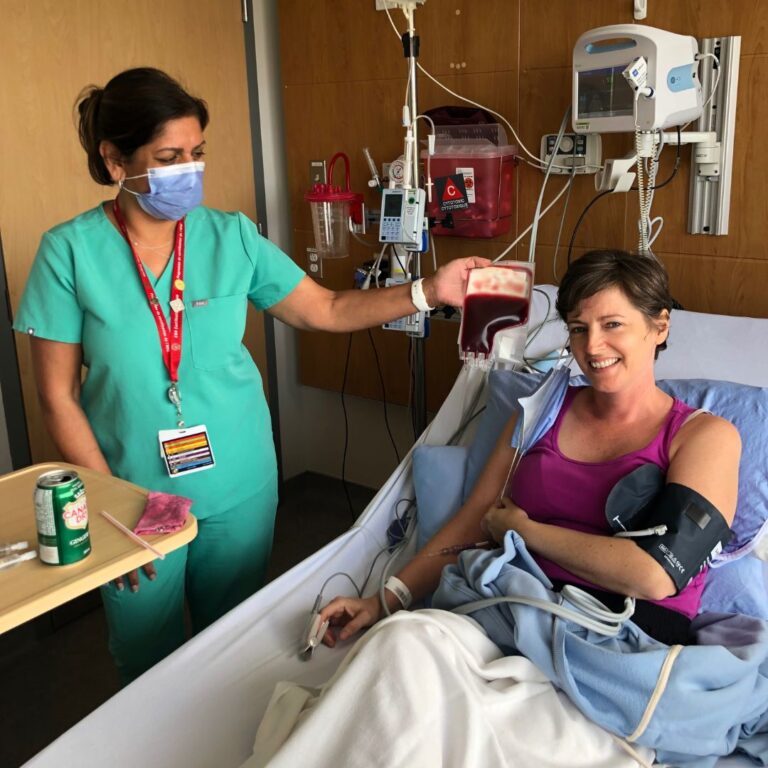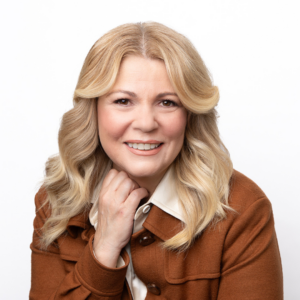From voice to action: Advancing women’s health through advocacy
Health28.10.2024

“What’s the point?”
“I can’t make a difference.”
“Why should I even try?”
If you feel this way after reading yet another story about the dismal state of women’s healthcare, we can’t blame you. The cause for concern is real, and many scientific studies have proven that hearing bad news can make you physically tired — bringing on a serious case of the “why bothers.”
It’s true that we’ve written stories using the words “crisis” and “neglect” and we’ve pointed out that women in vulnerable groups suffer disproportionately from long wait times and poor access to care.
But we also believe things can change. And it’s not just us. Alongside the shortfalls in the system, our expert, Dr. Sony Singh, a leader in minimally invasive gynecologic surgery at The Ottawa Hospital, has also seen incredible advances in care, and believes there’s hope for improvement … but we’ve got to work for it. If that thought makes you even more tired, stay with us for a moment.
How?
When you’re already overwhelmed, already doing your best just to meet the needs of your family, friends, and your job, or when, maybe, you’re one of the very women we’ve written about in our last two stories — trying hard to access care that often feels out of reach — how can you also work for systemic change?
Dr. Singh recognizes this challenge: “It’s tough. But the only way I see forward is for women to stand up and to challenge the status quo. I believe strongly that society has failed women with respect to optimizing their health. As department head of Obstetrics and Gynecology and Newborn Care at The Ottawa Hospital, that’s my mandate — to fight to increase access to care. But I still don’t think people understand the true impact of what we’ve been dealing with because we’ve accepted it for so long. So, until women speak up for each other, and their future generations, we’re not going to see that shift or change.”
Accentuate the positive
There’s nothing like a success story to provide energy and motivation, so let’s start there, because, we are *this* close to universal access to contraception in Canada, and much of the push came from Canadian women. At the time of writing, Bill C-64, the Pharmacare Act had completed its third reading in the Senate. When passed, the government promises:
- Free contraception medications and devices — from birth control pills, to IUDs, to implants, to the morning-after pill.
- Coverage for nine million women.
Women’s health advocate, Liz Thompson, would want to make sure you know that contraception is about more than birth control. As a first-line treatment for numerous health conditions including endometriosis, polycystic ovarian syndrome, bleeding disorders, and more, contraception can help with the access issues we discussed with Dr. Singh in our earlier stories. Free access is a big win for Canadian women.
We talked to Liz about her efforts fighting for free contraception as part of Ontario grassroots organization, Cover ContraceptiON. This campaign included many people contributing whatever level of time and expertise they had — and it worked. It’s the “many hands” idiom brought to life.
You don’t have to do it alone
This is important. There are other people who want things to be better, and some of them have already started organizations, much like Cover ContraceptiON mentioned above. Just a few include:
- Women’s Health Coalition (thewhc.ca)
- Women’s Health Collective Canada (whcc.ca)
- Canadian Foundation for Women’s Health – Canada’s national not-for-profit fundraising foundation for women’s sexual and reproductive health (cfwh.org)
These groups, and others like them, often have newsletters and ways you can volunteer to help you get involved in a way that matches your skillset and availability.
You can use the system to change the system
Many people don’t know there are independent government bodies across Canada established to help patients get the care they need.
Ontario’s Patient Ombudsman is an independent body funded by the Ministry of Health which has the authority to make recommendations to healthcare organizations based on findings from investigations into complaints and can also make recommendations to the government on broader healthcare system improvements. You can start a complaint from their website.
Ombudsman Ontario also oversees the Ministry of Health and Long-Term Care, the Ontario Health Insurance Plan (OHIP), and numerous programs that assist with funding drugs and medical devices and helps hundreds of people resolve complaints about these bodies every year.
You’ll find similar bodies in other provinces, including:
British Columbia: The Patient Care Quality Office (PCQO) in each health authority receives and responds to complaints about patient care. If unsatisfied with the response from the PCQO, individuals can escalate their concerns to the Patient Care Quality Review Boards.
Alberta: The Health Advocate and the Alberta Health Services Patient Concerns Resolution Process assist patients with concerns and complaints regarding health services.
Saskatchewan: The Office of the Saskatchewan Health Authority Ombudsman assists patients with complaints about healthcare services.
Manitoba: The Manitoba Ombudsman can investigate complaints about any aspect of provincial government services, including healthcare services provided by the province.
Quebec: The Québec Ombudsman (Protecteur du citoyen) handles complaints about Quebec government services, including those related to health and social services.
Newfoundland and Labrador: The Citizens’ Representative (Ombudsman) of Newfoundland and Labrador can investigate complaints about public services, including health services.
New Brunswick, Nova Scotia, Prince Edward Island: These provinces have health authorities that handle complaints directly, and they also have ombudsmen who can investigate issues related to any government service, including healthcare.
Yukon, Northwest Territories: These territories have ombudsmen offices that can address complaints regarding government services, including healthcare services. (Sorry, as of the time of writing, Nunavut does not have an ombudsman office.)
When you use an ombudsman or other complaint resolution mechanism, you’re not just helping yourself, you’re helping make the system better for others by documenting issues, driving accountability, and creating precedents.
Be aware
Dr. Singh is a strong believer in education and in patients understanding their options — so much so that his team has created a website with robust patient resources: Ottawa Minimally Invasive Gynecology (OMIG). At the same time, he recognizes the limitations: “We don’t have pelvic floor physiotherapy covered in Ottawa in any hospital setting. It’s the number one treatment we suggest for pelvic floor prolapse, incontinence, and pain, yet it’s 100 per cent private.”
And as much as he recommends patients learning as much as they can, he’s also adamant that patients shouldn’t be blamed for their conditions and refers to historic societal concepts of hysteria and the “wandering uterus” as part of the reason women haven’t been listened to or been able to effectively speak up and advocate for themselves.
So, how do we get to a place where our system can catch patients as they fall?
Back to Dr. Singh:
“Political action is going to be absolutely necessary. And the first step is to advocate to make it a priority nationally … [in the past] when we made the national priorities for wait times we focused on orthopedics, heart disease, cancer, and cataracts. Now, we need to ask at the political level to bring [women’s health] to the forefront.”
“In Canada, we need to have advocacy. There are political advocates who push these agendas forward for endometriosis and fibroid funding in the U.S., but not here because the assumption is everybody’s going to get equal access to care, which is absolutely not true.”
Nobody thinks this is easy. Dr. Singh knows it’s a big ask. He’s trying to do his part to keep the pressure off women already dealing with health challenges, so his suggestion is to do what you can at the level you’re able to.
That might be sharing this, or one of our previous stories, with friends, family members, or your elected representative. It might be considering these issues when you vote. It may be joining an organization or contributing to a campaign.
Whether it’s a hand in to work, or a hand up to speak out, every extra hand makes the work lighter.











